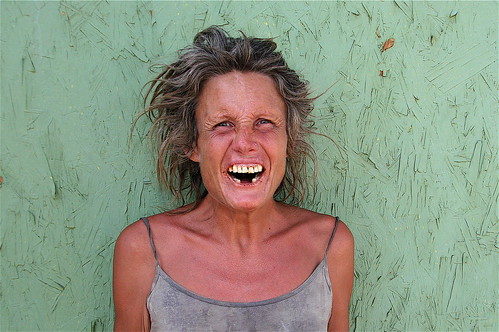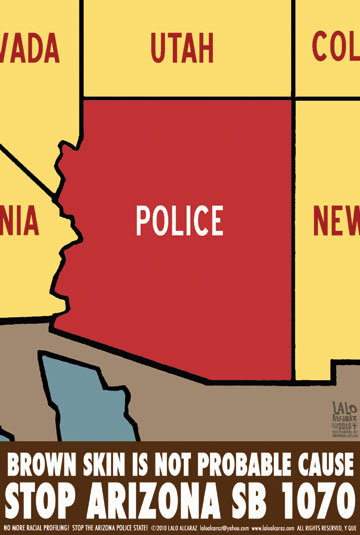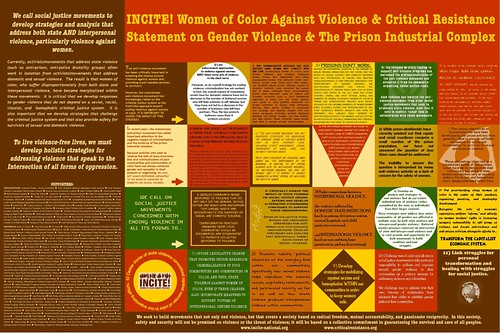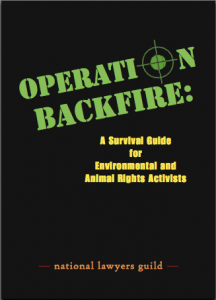Take direct action to support sex worker rights today!
Stop the Violence. Stop the Fear.
See us Here.
Mothers and daughters and
Teachers and lawyers and
Songs within our souls.
Brothers with dreams, and
Trans with means,
And a light inside us that grows.
Each have a story
With sadness and glory
Trying to make our way through
When the judgment fades,
And the hate abates,
We'll be standing right beside you.
Will you be standing beside us too?
Stop the Violence. Stop the Fear.
See us Here.
This year, the United States participated in a Universal Periodic Review (UPR) – a process set up by the Human Rights Council at the United Nations to assess the level of human rights in each country. The U.S. received more than 200 recommendations and must now decide to accept or reject each recommendation. Recommendation 86 called on the Obama Administration to “…ensure access to public services paying attention to the special vulnerability of sexual workers to violence and human rights abuses.” This is the first time the US has been internationally called upon to address its insensitivity to the long-neglected issues faced by sex workers.
To capitalize on this momentous opportunity, sex worker support and advocacy organizations from all across the country have organized to move government officials to agree to accept the recommendation. As a part of our organizing efforts we have reached out to sex worker groups, academics, policy makers, community organizations, funders and NGO’s around the globe and received unprecendented levels of support. (See the amazing list of folks who have signed our call to action below.)
On March 18th, the U.S. will go to Geneva to announce to the U.N. which recommendations they will accept and which they will reject. "86 THE VIOLENCE," a multi-city performance art action represents the culmination of sex worker advocacy efforts. We believe we have an opportunity to achieve high levels of media attention, which opens the door for us to let the world know in one solid, united voice, that violence and human rights abuses will no longer be tolerated in our community.
If the government accepts the recommendation, this action will serve as a celebration for having our nation’s first major political promise to address the needs of sex workers. If they do not accept the recommendation, then this action will serve to spark a fire of outrage that will be fueled by media and all of the supporters that have come out to champion the cause. Either way, we believe the more sex workers and allies we can motivate to participate in this action, the more media attention we will receive, and the greater the likelihood that we can alter the conversation and public perception about sex worki in this country.
HOW CAN I GET INVOLVED?
Join us in this public action performance on March 18th!SWOP, Sex workers and allied organizations all over the country will be standing up and stripping down for recommendation 86!
Here's what you do:1. Check if there is already a key organizer in your city. If there is no key organizer, email us, and we'll list YOU as the key organizer!
Key organizers will be contacted by our media team to help you identify media outlets in your area, and follow up.
If you are a key organizer, pick a location for the action that we can list on the website, and a contact name, number, and email address
"86 the violence" will take place at noon PST, 1pm MST, 2pm CST, and 3pm EST on March 18th, 2011 for 86 minutes!
2. Enact "86 the violence."-You need AT LEAST one person to be a TARGET and one person to be SUPPORT/ INFORMATION. More people are better, 3 TARGETS and a few SUPPORTS are best to protect everyone involved.
-TARGETS dress up as shown in the
video here . Draw a red bullseye somewhere on your body. Be as close to naked as is legally allowed on the street in your city, or that you are comfortable with. Tie red fabric around your eyes, your mouth or your hands. These three ties are symbolic and can mean many things about lack of access, silence, and invisibility. Infuse them with your own meaning.
Install the TARGETS on the street, in a park, or in any public place. TARGETS symbolically or verbally ask passerby to help us “86 the violence.” this can be done by silently holding out a cloth that passerby can use to wipe the target off your body, or verbally asking.-SUPPORT may dress in any manner classic to the sex worker rights movement. Wear red, carry red umbrellas, and have at least one or 2 umbrellas with the number 86 painted on the top. Print out the information we have HERE:
literature to hand out to passersby and
lyrics to our song. Perhaps keep the information to hand out in an upturned red umbrella.
3. The final action of the performance is to remove or cut off the red cloth, wipe off the targets, and leave the red cloth in the shape of the number 86 on the ground.
4. Take photos. Document the hell out of it, and send your documentation to us. We'll be making a montage of videos and photos to take to press as well.
notes: if staying installed in one place becomes and issue (a cop tells you to leave, or threatens you) make sure your group knows what it wants to do. We recommend taking the whole production on a walk. You can simply walk down the street slowly, to avoid loitering. The 86 minutes need not be in one place. We recommend wearing the smallest amount of legally allowed clothing (in many places, this is a thong, underwear or T-Strap and nipple covering). We recommend that ALL TARGETS wear the same amount of clothing/covering for continuity and gender alliance.--------------------
Organizations that have come out in support of accepting the recommendation:Action pour la lutte Contre L'ignorance du SIDA (Democratic Republic of Congo)
AIDS Action Baltimore
AIDS Foundation of Chicago
AIDS Project Los Angeles
American Medical Students Association
Americans for Informed Democracy
Amnesty for Women
American Jewish World Service
Aniz, Inc.
Asocijacija za Borbu Protiv Side (Association against AIDS, JAZAS, Yugoslavia)
Association of Nurses in AIDS Care
Bay Area Sex Worker Advocacy Network
Best Practices Policy Project
Black Communities' Process (PCN)
Center for Anti-Violence Education
Center for Constitutional Rights (CCR)
Center for Health and Gender Equity (CHANGE)
Civil Liberties and Public Policy Program (CLPP), Hampshire College
Collectif pour le Developpement Economique, Social et Culturel Integre (Democratic Republic of Congo)
Desiree Alliance
Different Avenues
Erotic Service Providers’ Legal, Education and Research Project
Four Freedoms Forum
Harm Reduction Coalition
Helping Individual Prostitutes Survive (HIPS)
HIV Prevention Justice Alliance
HIVictorious, Inc.
Housing Works
Human Rights Watch
International Community of Women Living with HIV and AIDS Global (ICW Global)
International Committee for the Rights of Sex Workers in Europe
International Rectal Microbicide Advocates
International Women’s Health Coalition
Ipas
JJJ Association (Hong Kong)
Madonna e.V. (Germany)
MADRE
Malcolm X Center for Self Determination
Nashville CARES
National Minority AIDS Council
Nigerian Diversity Network
Paso del Norte Civil Rights Project
Public Interest Project, US Human Rights Fund
Population & Development Program, Hampshire College
Religious Institute
Sexuality Information and Education Council of the U.S. (SIECUS)
Scarlet Alliance (Austraila)
Sex Worker Forum (Botswana)
Sex Workers Action New York (SWANK)
Sex Workers Outreach Project (Chicago Chapter)
Sex Workers Outreach Project (Las Vegas Chapter)
Sex Workers Outreach Project (SWOP National)
Sex Workers Outreach Project (NYC Chapter),
Sex Workers Outreach Project (Seattle Chapter)
Sex Workers Outreach Project (Tucson Chapter)
Sex Workers Project, at the Urban Justice Center
Sexuality and Gender Working Group, Human Rights Network
SisterLove
St. James’ Infirmary
Syndicat du Travail Sexuel (STRASS) (France)
Tais Plus (Kirgizstan)
TAMPEP (European Network for HIV/STI Prevention & Health Promotion among Migrant Sex Workers)
U.S. Positive Women's Network (PWN) a project of WORLD (Women Organized to Respond to Life-threatening Disease)
Women of Color United
Women’s Network for Unity
Women’s Network for Unity (Cambodia)
Women's Organization Network for Human Rights Advocacy
Women’s Re-Entry Network
Women with a Vision
x:talk (London)
Academics who have come out in support of the recommendation:*Laura Augustin, Ph.D.; Author, Sex at the Margins
*M. Jocelyn Elders, M.D.; 15th U.S. Surgeon General
*Elizabeth Bernstein, Ph.D.; Assistant Professor, Womens’ Studies & Sociology, Barnard College, New York, New York
*Barb Brents, Ph.D.; Professor of Sociology, University of Las Vegas, Nevada
*Wendy Chapkis, Ph.D.; Professor of Sociology, Director of Women and Gender Studies, University of Southern Maine
*Deborah Cohan, MD, MPH; Associate Professor
Department of Obstetrics, Gynecology and Reproductive Sciences, University of California, San Francisco; Medical Director, Bay Area Perinatal AIDS Center; Associate Director, National Perinatal HIV Hotline
*Melissa Ditmore, Ph.D.; Consultant, Research and Rights-Based Programming
*Shari L. Dworkin, Ph.D., M.S.; Associate Professor, Dept. of Social & Behavioral Sciences; Director, Sociology Doctoral Studies Program; Affiliated Faculty, Center for AIDS Prevention Studies (CAPS); Affiliated Faculty, Global Health Sciences, University of California, San Francisco
*Smarajit Jana, MD; Principal, Sonagachi Research and Training Institute, Kolkata, India
*Jessica Fields, Ph.D.; Associate Professor, Sociology,Research Faculty, Center for Research on Gender and Sexuality
*Valerie Jenness, Ph.D.; Dean, School of Social Ecology, Professor, Department of Criminology, Law and Society, Professor, Department of Sociology, University of California, Irvine
*Kamala Kempadoo, Ph.D.; Professor, Department of Social Science, York University, Toronto, Canada
*Gail Kligman, Ph.D.; Professor of Sociology, UCLA, Director, Center for European and Eurasian Studies
*Kari Lerum, Ph.D.; Associate Professor, Interdisciplinary Arts & Sciences, Adjunct Professor, Women Studies, University of Washington, Bothell
*Jill McCracken, Ph.D.; Assistant Professor, Rhetoric, Department of Languages, Literature, and Writing, University of South Florida St. Petersburg
*Alice M. Miller, J.D; Visiting Senior Research Scholar, Robina Foundation Fellow, Yale Law School
*Penelope Saunders, Ph.D.; Director, Best Practices Policy Project
*Svati P. Shah, Ph.D., MPH; Assistant Professor, Women, Gender, Sexuality Studies, University of Massachusetts, Amherst
*Kate Shannon, Ph.D., MPH; Assistant Professor, Dept of Medicine, University of British Columbia; Director of Gender & Sexual Health Initiative, BC Centre for Excellence in HIV/AIDS, Vancouver, Canada
*Lara Stemple; Director, Graduate Studies, Director, Health and Human Rights Law Project, UCLA School of Law
*Dallas Swendeman, Ph.D., MPH; Department of Psychiatry and Biobehavioral Sciences, David Geffen School of Medicine at UCLA; Semel Institute for Neuroscience and Human Behavior; Center for Community Health; Global Center for Children and Families; Center for HIV Identification, Prevention & Treatment Services
*Juhu Thukral, Esq.; Co-Founder and Former Director, Sex Workers Project at the Urban Justice Center New York, New York
*Stephanie Wahab, Ph.D.; Associate Professor of Social Work, Portland State University, Portland, OR
*Carole S. Vance, PhD, MPH; Assoc. Clinical Professor, Mailman School of Public Health, Columbia University, New York, New York
*Ronald Weitzer, Ph.D.; Professor of Sociology, George Washington University, Washington, DC
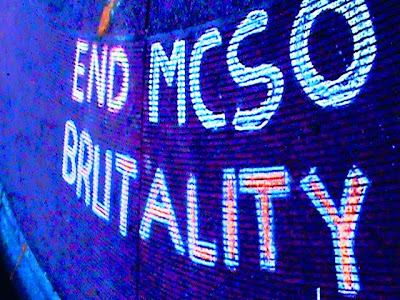 Let's see if the MCAO is really "tough on crime" or just on the people: will they let MCSO Detention Officer Kevin Gerster walk with misdemeanors now, after beating Hughes up? They already let the guy slide by not charging him with class 6 felonies under ARS 13-3623, which is supposed to protect vulnerable adults. And will Alan Keesee even get charged for his assaultive behavior? As far as I know, he's still on paid leave from the MCSO.
Let's see if the MCAO is really "tough on crime" or just on the people: will they let MCSO Detention Officer Kevin Gerster walk with misdemeanors now, after beating Hughes up? They already let the guy slide by not charging him with class 6 felonies under ARS 13-3623, which is supposed to protect vulnerable adults. And will Alan Keesee even get charged for his assaultive behavior? As far as I know, he's still on paid leave from the MCSO.








